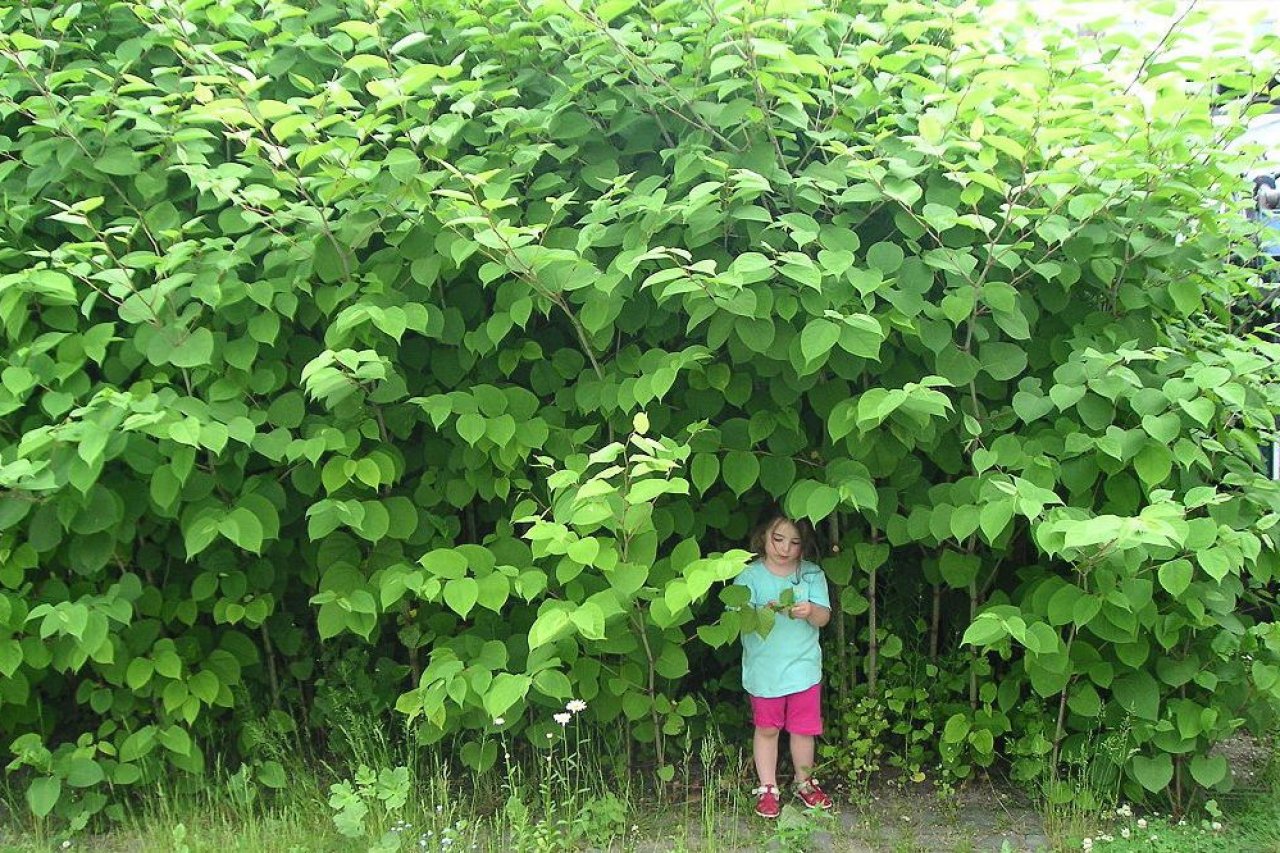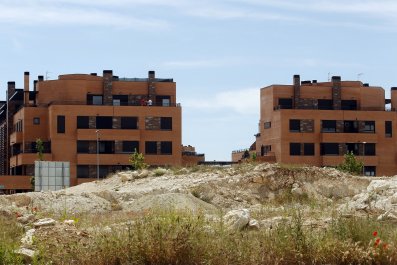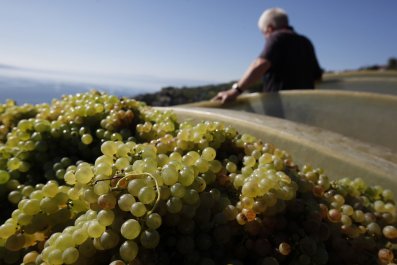When the German botanist Philipp von Siebold sent a variety of plant specimens to the Royal Botanical Gardens at Kew in August 1850, he had no idea what he was unleashing on the world.
Among the various floral and tuberous growths he dispatched was a plant which, 164 years later, is leaving a trail of mayhem all across the planet. It goes by the name of Japanese knotweed, or Fallopia japonica. It presents a pleasing appearance to the eye: heart-shaped leaves, bamboo stems and pretty, little white-flower tassels. What is less obvious is this plant's relentless killer instinct. Look through the horticultural literature, and you will see it described as "thuggish," "ferocious," "invasive" and an "indestructible scourge." And where once it resided mainly in the wild, today it terrorizes private gardens and homes.
Originally indigenous to Japan, knotweed was originally shipped westward by von Siebold, and, at the last count, was reported to be undermining man-made structures in some 26 European countries and 36 American states.
"I get 15 phone calls per week from people who are extremely worried about the activities of Japanese knotweed in and around their homes" says Mike Clough, who runs the Manchester, England-based firm Japanese Knotweed Solutions. "What's more, many of those people are in floods of tears, after being told that because of knotweed, their home is unsaleable."
Why? Because Fallopia japonica may start out as an attractive addition to a garden, but it soon turns into a rapacious monster. Growing up to 6.5 feet tall and 65 feet wide due to its tireless and unstoppable army of unseen roots, knotweed spreads out underground and forces its way up through every crack imaginable, in patios, concrete paths, and even in walls and floors.
What's more, getting rid of it is a task beyond the average gardener. It can take up to five years of regular chemical blitzing before the knotweed all-clear can be sounded.
"Eradication requires steely determination," warns the U.K.'s Royal Horticultural Society, stressing that it has cost £70 million ($120 million U.S. dollars) just to remove knotweed from the site of the London Olympic Games. "Its rapid annual growth and relentless spread allows it to overwhelm other garden plants."
All over Europe nations are on knotweed alert; they've got it in Latvia, Germany, Hungary, Austria and Switzerland. Meanwhile across the other side of the world in Staten Island, New York, residents have been telling TV crews how the weed is "Frightening, scary and taking over everything."
The discovery of Japanese knotweed on a person's property can come as a blow that completely undermines plans for the future. That's what happened in the dramatic case of the West Midlands man who, in July last year, killed his own wife, and then himself, on being told (wrongly, as it turned out) that knotweed from the next-door golf course was going to destroy the value of his house.
In South Wales, U.K., Assembly member Mike Hedges reckons there are 62,000 tons of knotweed that need removing from the city of Swansea (Wales' second largest) alone. And, according to the U.K. Department of the Environment, the total cost of U.K. knotweed eradication would be £1.56 billion (or 2.68 million U.S. dollars).
Naturally, mortgage lenders have got wind of what's happening, not least because solicitors' forms now require homeowners to declare knotweed's presence. Tick the "yes" box, and lenders will either refuse to grant the buyers a loan, or else impose strict chemical-treatment requirements (weedkiller of choice being glyphosate).
"Where remediation works are being implemented to remove Japanese knotweed, lenders will generally look for evidence of an initial treatment, together with commitment to an ongoing program," says Bernard Clarke, from the London-based Council of Mortgage Lenders.
With the emphasis on "ongoing." It can be anywhere from three to five years until a property can be officially declared knotweed-free. And re-contamination can happen all too easily. Even the tiniest bit of leftover root can cause regrowth, which means that digging up knotweed is not so much a matter of making a hole, as it is of carrying out a large-scale excavation. The "crown" or "head" of a knotweed infestation can be the size of a bull's head, with scores of roots radiating out from it like strands of hair.
In the U.K., the same kinds of ultra-strict rules that govern toxic waste apply to knotweed. The Environmental Act of 1990, for example, requires that both the firms removing the plant and the site receiving the waste must be licensed for this particular work. And merely dumping it in the trash or into a landfill site is strictly forbidden. Indeed, the Wildlife and Countryside Act of 1981 decrees that planting or dumping knotweed in the wild is an offense punishable by a fine or imprisonment.
Sometimes, though, the properties attacked by Japanese knotweed are brand new. This happens when developers don't carry out a close enough examination of the soil upon which they are building. "I've worked on a few sites where that has happened," says Thomas Payne, of London-based TP Knotweed Solutions. "There's been knotweed in the ground, and it's grown up through the skirting board, which is quite alarming. The thing is, that unless it's dealt with, knotweed isn't just going to go away."
All very well, of course, if the knotweed is confined to a garden. Less easy, though, if it's coming in from sites owned by railway companies or canal and river organizations. Or, for that matter, if it's growing in from your neighbor's yard.
"The sale of our flat in New Cross nearly fell through because of a huge clump of knotweed in the next-door garden," says picture editor Marian Paterson. "It comes up through the rocks in our patio, and I pull it up whenever I see it, but the neighbor in question says he doesn't want to get rid of it."
That's why professionals have some advice for you if you are considering purchasing a piece of property with a patch of Japanese knotweed on it or nearby.
"Simple – don't buy it," says mortgage adviser Neil Soundy, based in Cardiff. "I ask my clients: 'why buy a place that in five years' time, you might not be able to sell?'"
There is, however, a solution. It's a compromise: the seller starts the operation of a knotweed-treatment program, which is continued by the buyers, and backed up with an insurance policy whereby, should knotweed return, the cost of re-eradicating is covered.
The cheapest solution, though, starts at around $5,000, and (if outbuildings are being damaged) can quickly rise to $25,000 and beyond, not least because of the length of time required for effective eradication. One option is to treat the knotweed as Dracula, and bury it underground, sealed up within an unbreakable membrane. A more visible solution is to imprison the knotweed within a sort of cage, known as Mesh Tech, and slowly kill off the plant through lack of potassium, plus a gradual snapping, wilting and crushing against the metal mesh. Another weapon in the fight is the tiny, sap-sucking Aphylara itidori insect, which will do some knotweed-devouring (there are 186 insects and 40 fungi that attack knotweed in Japan, but none up until now in the U.K.).
This is not a new problem. As far back as 1887, gardeners in Alexandra Park in Oldham, England, were lamenting the way in which knotweed "kept appearing in nearly every piece of cultivated ground." In 1899, the celebrated British gardener Gertrude Jekyll urged that knotweed should be "planted with caution," and by 1905, the U.K.'s Royal Horticultural Society was sending out emergency signals, saying "it must be kept in check."
In 2014, it may be the case that we've long past the point where the plant was in check. One saving grace is that even now Japanese knotweed remains a purely female plant; there is no male version, so its spread is dictated purely by how far it can stretch its roots. "The nightmare, of course, is that one day there will be a male version, and the plant will produce viable seeds," says Mike Clough. "Should that happen, there would be a knotweed epidemic that could bring about the end of our native flora. Things may not be good at present, but believe me, they could be an awful lot worse."
Correction: This article originally stated that Japanese knotweed has 30 insect species that feed on it and six types of funghi that attack it in Japan. The correct figures are in fact 186 insect species and 40 types of funghi.






























